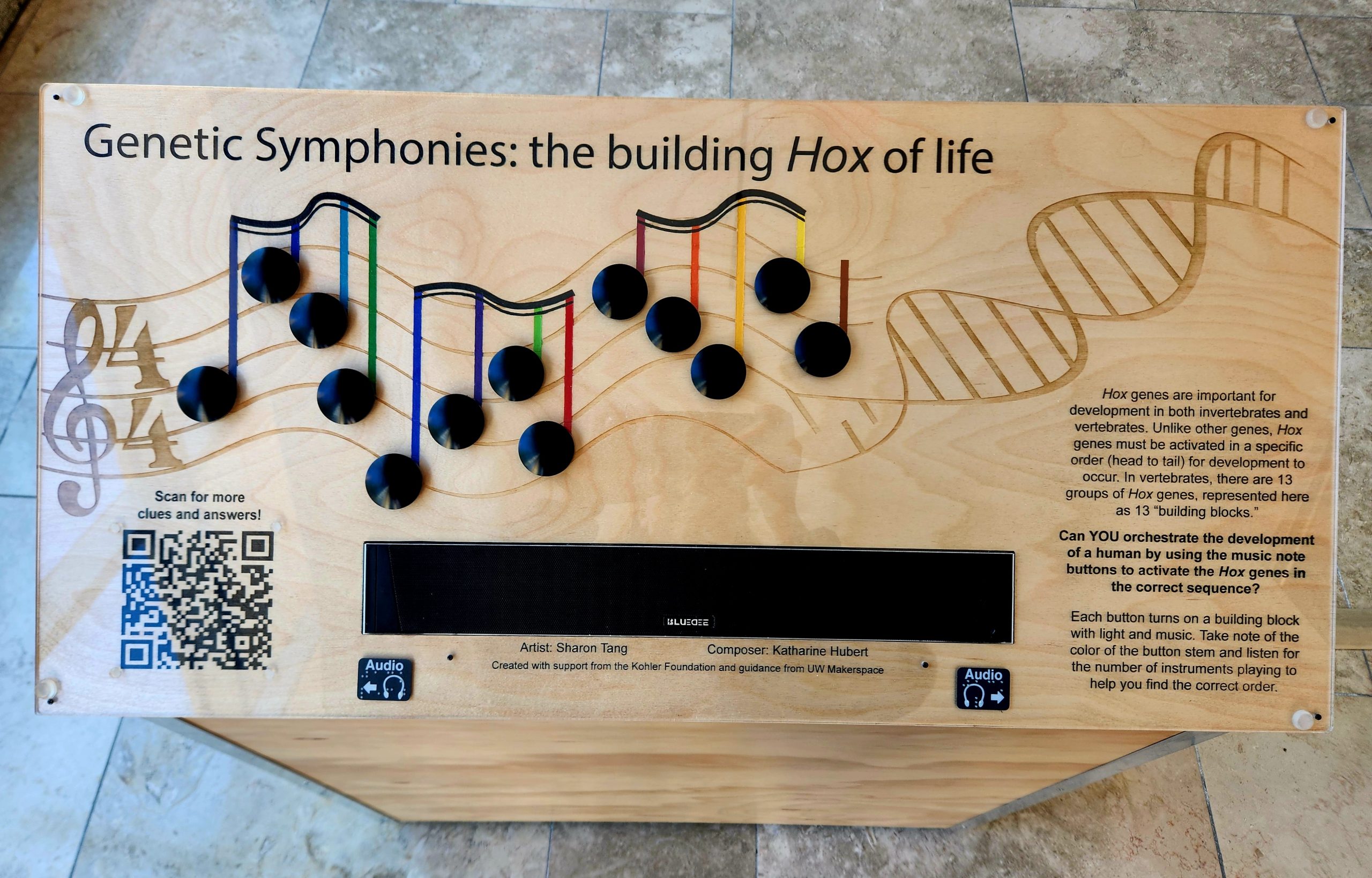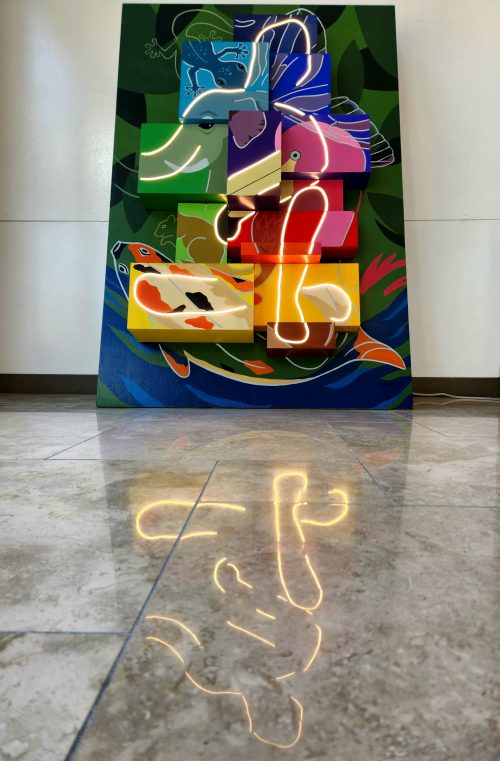Sci-Art: Harnessing the power of creativity to promote more inclusive learning opportunities
Posted by Katharine Hubert, on 24 July 2024
Over the past year and a half, I had the opportunity to participate in the UW-Madison Kohler Fellowship Program. In this program, an artist is paired with a scientist to create a science-art fusion project, some goals of which include fostering cross disciplinary communication and increasing the accessibility of scientific concepts through art. Though I was accepted into this program as a science fellow, my partner, Sharon Tang, and I both consider ourselves artist-scientists. Sharon is a PhD candidate in the Cell and Molecular Biology program and an avid muralist, while I’m a Genetics PhD candidate and composer/musician. Together we leveraged our scientific knowledge and artistic expertise to create “Genetic Symphonies: the building Hox of life”.

As most developmental biologists know, Hox genes are transcription factors critical for patterning the skeletal axes. They also remain one of science’s biggest mysteries; we still have yet to determine what Hox genes actually regulate to control developmental and adult homeostatic processes. In addition to the mysterious mechanisms of action, Hox genes possess unique properties (clustered chromosomal arrangement, spatio-temporal expression pattern, regional restriction) that lend nicely to artistic manipulation and exploration.
Sharon and I took advantage of these features to generate an interactive, multi-modal exhibit. In our exhibit, 13 paralogous groups of Hox genes are represented by 13 painted building blocks, affectionately referred to as “Hox boxes”. Likewise, there are 13 color-coded, randomized, buttons that control each “Hox box” on an accompanying podium. Participants must activate gene expression, via a button press, and determine the correct order of Hox gene activation (head to tail). Each correct button press produces light in the corresponding box and sounds a unique measure of music. With each successive, correct, button press participants develop their own genetic symphony and an abstract human figure via lights. By conveying development through both light and sound, we also increase the accessibility of our exhibit.
Want to know more about Genetic Symphonies: Building Hox of life? Check out Behind Building: Hox ! At this site, you can find more information about the construction, fabrication, composition, and electronics of the exhibit.



 (3 votes)
(3 votes)